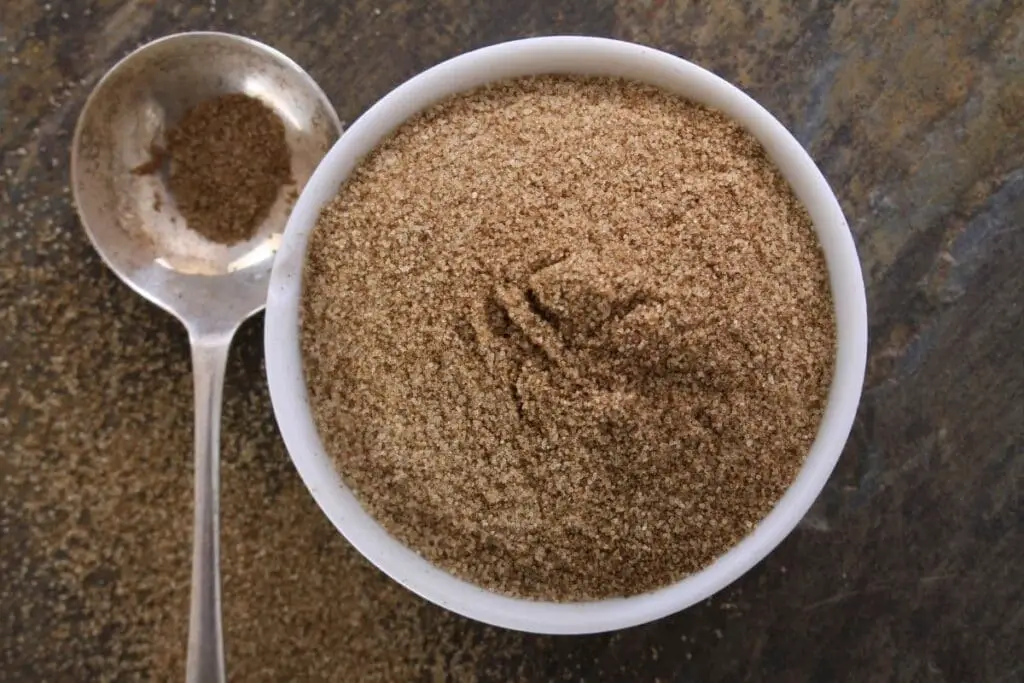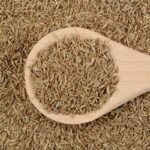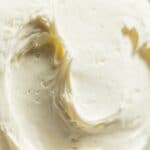In short, the best alternatives to celery salt include homemade celery salt, fresh celery, dehydrated stalks, etc. Each substitute has its own flavor and saltiness, so you should adjust the amount and taste as you cook.
Whether it’s a Bloody Mary, meat rub, or salad you are making, celery salt will add a great earthy, salty flavor with herbal undertones.
In addition, celery seeds have great health benefits. If you don’t have any on hand, we’re here to help. In this guide, we’ll uncover exactly what it is, how it’s used, and help you choose the best substitutes for celery salt.
What is Celery Salt?
Celery salt is a combination of table salt and celery or lovage seeds. Lovage is a similar herb belonging to the same plant family. The salt to celery seed ratio is usually two parts salt to one part ground celery seed (2:1) or three parts salt to two parts celery seeds (3:2).
Some manufacturers that sell this as a seasoning blend also add spices such as paprika and capsicum, include dried and ground celery stalks, and usually add some form of preservative. You can avoid this by making your own salt-seed mix or looking out for all-natural versions that don’t contain chemical preservatives.
The seeds have an intense celery flavor, with earthy notes and a slightly bitter undertone. Adding them to pickling mixes is a good way of imparting the flavor without having to chop loads of vegetable stalks.
Celery naturally has a salty flavor but does not have the high sodium levels of table salt. This alone makes it a great alternative when you have to reduce your salt intake for health reasons. Keep in mind, however, that celery salt still contains regular, high-sodium salt in the mix.
How to Use Celery Salt
Celery salt may not be a very common ingredient on its own, but it is likely present in a lot more dishes and drinks than you are aware of. Besides being a staple for Bloody Mary’s and other cocktails, tomato and vegetable juices, it is also used to add flavor to Chicago-style hot dogs, salads, dressings, soups, and stews.
It can be used as a rub on meat, seafood, and poultry, added to water when cooking shellfish, and combined with other spices to make your own seasoning mix, marinades, and dressings. Even simple mixes with garlic, black pepper, and paprika, or ginger bring a big flavor boost compatible with almost any meat or vegetable dish.
Less common ways to incorporate the seeds or salt mixture include adding it to coleslaw, potato salad, rice, sprinkling it over boiled eggs, and mixing it with melted butter to drizzle over popcorn or grilled fish.
When choosing the most suitable substitute for celery salt, consider what properties it brings to your dish and what will most closely mimic that feature. This could be saltiness, herbal flavor, bitterness, or texture.
Best Celery Salt Substitutes
1. Homemade Celery Salt
If you can’t find any in store but have celery or lovage seeds, you can make your own celery salt at home. Even at times when you can purchase it ready-made, it is still best to grind your own seeds just before use to retain the nutritional benefits and best flavor.
Mix coarse salt and seeds together in a 2 to 1 ratio and grind them in a spice grinder, coffee grinder, or with a mortar and pestle. Alternatively, mix pre ground celery powder with fine table salt in the same ratio of two parts salt to one part finely ground celery seed. This can be used in most savory dishes.
2. Fresh Celery
This option is a lot easier to come by and you may even already have some in the refrigerator. Since fresh celery stalks and leaves are more fibrous and bulkier than the seeds, you won’t be able to use this for seasonings or meat rubs. However, in salads, soups, stews, and cocktails, there are plenty of ways to incorporate the fresh veg to impart the same taste. The seeds have a much more intense flavor so you will need to use more of the stalks and leaves for the same flavor boost.
You can use the celery leaves and stalks in the following ways to add flavor and a touch of saltiness to dishes:
- Dice them and toss fresh into a green salad or potato salad
- Toss small leaves in with a green salad
- Juice the stalks and leaves to use in cocktails
- Add chopped and sauteed stalks to soups and stews for a classic flavor addition
- Roast or braise the stalks and add them to potato or rice dishes
3.Dehydrated Celery Stalks
If you have a dehydrator, dehydrating the stalks and blending them into a powder form is another way to impart the same flavor profile into your dish. You can also dehydrate finely chopped stalks in the oven. However, oven drying can take a little extra time since it needs to be dried at a very low heat to prevent it from cooking and becoming mushy.
Regardless of the method you use for dehydration, let the pieces cool down fully. They should be completely free of moisture and crisp. Blend the dry pieces into a powder and store in an airtight container or spice jar. You can now mix the powder with salt, use it as a seasoning on its own, or blend it with other spices.
4. Nigella Seeds
Nigella seeds are not from the same plant family but they do have similar flavor nuances. They bring complexity to dishes and are often used in Indian cooking. If you cook a lot of Indian dishes you may just have these around in the pantry. These seeds are especially handy because you can use them in equal quantities in any dish to replace celery salt. Grind one part nigella seeds with two parts salt and you’re good to go.
5. Caraway Seeds
Caraway is often used as a whole seed in rye bread, potato salad, and sauerkraut. Caraway has a nutty and slightly sweeter taste reminiscent of anise. Mix ground caraway seeds with salt in a 1:2 ratio as your replacement. It does have a strong flavor so use slightly less than recommended to avoid overpowering other flavors.
Related: Replacement for caraway seeds
6. Dill Seed
If you aren’t a fan of celery, dill seeds make a great substitute. They are from the same plant family as celery with an aromatic but slightly bitter taste. These seeds are generally used in pickles, dressings, soups, and bread.
Grind dill seeds into a powder and mix them in a 1:2 ratio with salt. For example, mix half a teaspoon of dill seeds with 1 teaspoon of salt. Replace this dill salt mixture in the exact same quantity in any recipe that calls for celery salt.
See more: Dried dill weed substitute
7. Fennel Seeds
Fennel seeds can be used whole or ground. As with the previous combinations, mix the seeds in a 1:2 ratio with salt. Their flavor is best when lightly dry toasted before grinding or adding to your recipe.
The seeds have a strong anise taste with hints of licorice which is sweeter than celery. They are however often used in similar applications such as meat seasonings, potato salad, dressings, and are a primary flavorant in Italian sausage. Add slightly less when using it as a substitute to prevent overpowering other flavors in your dish.
See more: Fennel substitute
8. Garlic or Onion Salt
These don’t taste very similar, but they do add a great combination of flavor and saltiness. Due to their potent flavor and excessive saltiness, it is best to use a small amount initially and then add to taste if necessary. Both onion and garlic salt can be used with any meat, vegetables, salad dressings, and in sauces.
FAQ
Celery seeds will give you a more intense flavor with a touch of saltiness. The salt will however be less pronounced. If you are looking to cut down on sodium, using the seeds only is a good option. If you aren’t too worried about salt levels, add a sprinkle of regular salt to your recipe with the seeds.
Two tablespoons of minced celery stalks are the approximate equivalent to ½ a teaspoon of ground seeds.
The seeds are actually derived from wild celery. Although part of the same family with the same profile, the wild plant has a stronger celery flavor.
To make celery salt without salt, you can finely grind or blend dried celery leaves or celery seeds to create a flavorful seasoning alternative.
Conclusion
Although not nearly as common and easily obtainable as table salt, celery salt mix is a wonderful food seasoning for any savory meal. Depending on the way you are using it, you can use spice powders, whole seeds, or vegetable leaves and stalks as a substitute. If all else fails, a pinch of regular salt will do the trick too.
See more: Shelf life of salt
*image by neillangan/depositphotos









